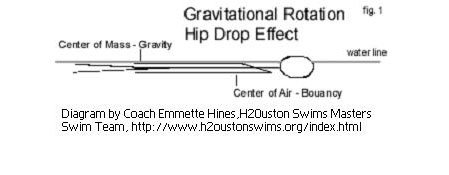The Buoyant Swimmer
What is Buoyancy?
A buoyant swimmer floats in water. That means you need to ensure that the amount of water that your body displaces ends up weighing more than you do. Since your lungs are full of oxygen, this allows you to float to the top of the water without too much of a struggle. But that doesn’t mean that everyone who is swimming will experience a similar degree of floating in the water. There are actually things that impact the height that you are able to achieve when you are floating in the water.
Your body type for example is going to impact your buoyancy. Fatter people will actually float better
than those who are muscular. That doesn’t mean that those who are into swimming should try to increase their body fat by
any means, as leaner muscle is ideal for swimming. You need not put on wight to be a buoyant swimmer.
Another factor in being a buoyant swimmer is the amount of air that can fill your lungs. Those with large, healthy lungs are going to find that they are going to be able to rise further and have greater buoyancy than those who don’t practice on increasing the capacity of their lungs.

Salt density is another factor that will come into play with this. When the water has a higher concentration of salt in it, the body will rise easier making you a natural buoyant swimmer. This is why people are able to float with ease in the Red Sea, while they may struggle to float in a river or a stream.
If you are trying to master buoyancy and find you are struggling, it can help to relax your mind and body. Those who are successful will find that they need to relax their muscles and to control their breathing better. When you are tense and stressed, you breathe shallow and this prevents you from rising to the top of the water.
If the depth of the water is proving to be a problem for you, then consider turning towards shallow water. The depth of the water has no impact on buoyancy whatsoever. It does impact the feeling of lightness in some cases, but you can float the same just a few feet as you can with several hundred feet.
All of this sounds incredible, but the concept of buoyancy isn’t reserved for humans swimming in the ocean. Instead, fish are also exceptional at this practice. This approach determines the ability a fish has to swim with efficiency. While fish can take advantage of pectoral fins if they are dense to create the lift, this doesn’t offer a lasting solution. In fact, this can prevent swimming backwards or hovering as needed. Fortunately, with buoyancy, they are able to have parts of their body become less dense than the water that surrounds them.
This is done with either gasses forming in the body, or through lipids. Gasses that form are produced in the swim bladder of the swimming fish. As the gas compresses, they are able to improve buoyancy. They aren’t the most effective fish at swimming though. Instead, those who use lipids will find that they can actually have a better variation in depths and they won’t have to compensate for sudden changes in water pressure either.
Both humans and ocean life are going to need buoyancy to swim better. This is a powerful technique that you will want to keep in mind when you are looking to travel considerable distances in the water or travel through various depths.
Today’s Daily Swim Workout:
Warm-Up: 200 freestyle best technique, 200 Individual Medley best technique, 200 freestyle super-slow tai chi style, 100 butterfly kick on back, 100 freestyle
10 X 50 with short swim fins on alternating freestyle and backstroke nonstop
Kick with fins: 2 X 300 as: 50 butterfly, 100 backstroke, 50 breaststroke, 100 freestyle
Pull with Hand-Paddles on: 2 X (350 freestyle, 50 breaststroke)
10 X 100 Individual Medleys with 10-15 seconds rest
8 X 25 butterfly 20 seconds rest
4 X 50 backstroke 15 seconds rest
4 X 50 breaststroke 10 seconds rest
Warm-down: 200 freestyle easy
Total: 4500 meters or yards depending on the length of your pool
back to the top of buoyant swimmer page








